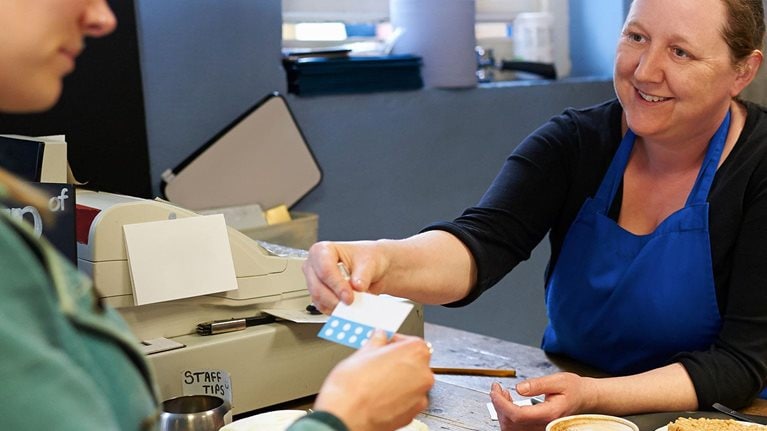Among the changes to lives and livelihoods during the COVID-19 pandemic has been a massive shock to consumer loyalty. McKinsey’s latest research on consumer sentiment has revealed that 35 percent of United States consumers have tried a new brand since the crisis began while 77 percent have also tried new shopping behaviors, including new channels, stores, and brands. That rate generally holds true for consumers surveyed around the world.
The reasons for that unprecedented shift include product availability and price, but the trend underscores the broader challenge to traditional loyalty models and programs. The shift away from points-only loyalty programs was already well under way when the crisis hit. In this new paradigm, paid loyalty programs offer an attractive option for companies both to attract new customers and to shore up long-term customer value in the midst of a tectonic shift in consumer loyalty and preferences.
A 2020 McKinsey survey on loyalty programs found that members of paid loyalty programs are 60 percent more likely to spend more on the brand after subscribing, while free loyalty programs only increase that likelihood by 30 percent. In addition, paid loyalty programs drive higher purchase frequency, basket size, and brand affinity compared with free loyalty programs (Exhibit 1). As a result, paying members can be worth several times more than nonpaying members, even setting aside revenue from membership fees themselves.

The landscape of paid loyalty programs is small today, but it’s expanding rapidly. Recently, major brands have launched paid loyalty programs to fund unique experiential benefits and offer an air of distinction to members. These companies and many others are capitalizing on this emerging loyalty model as a way of satisfying their increasingly connected and experience-driven consumers.
Paid loyalty: What is it?
On the surface, paid loyalty programs can resemble traditional loyalty programs with just one small catch: a participation fee. This can take the form of a one-time membership fee or a recurring subscription. But the distinction of paid loyalty goes beyond price alone (see sidebar, “Fee-based commercial models”).
Paid programs have a higher burden of proof to acquire customers, but they typically derive higher customer value from those who sign up. Why would consumers be willing to pay up front for loyalty programs, when conventionally they have been free to use? When done right, paid loyalty elevates the overall consumer experience, delivering bespoke, high-value rewards and drawing the consumer into an exclusive community oriented around a shared brand promise or offering.
Consumer demand for paid loyalty programs is growing. In 2019, consumers spent an estimated $25 billion to $30 billion on paid loyalty programs, about a 25 to 50 percent growth rate from the previous year. With 63 percent of consumers already members of at least one paid loyalty program, it’s clear that paid loyalty is not a niche trend (Exhibit 2).

Would you like to learn more about our Marketing & Sales Practice?
When paid loyalty makes sense
Paid loyalty programs will suit some industries and business models more than others. Here are two business objectives that paid loyalty programs may help accomplish:
1. Funding premium rewards that are too expensive to offer more broadly
In recent years, the battle to retain highest-value customers has intensified and driven up the cost to serve. Some companies have responded by quietly paring back or devaluing their loyalty offerings, a solution that only serves to exacerbate the problem by leading consumers to engage less with the brand. On the other hand, some winning companies are shifting the loyalty paradigm itself by bolstering their offerings and charging customers an access fee to help fund more-expensive premium benefits. As an example, Lululemon’s paid program offers members free goods, exercise classes, and exclusive digital content as part of its $128 subscription fee. While Lululemon’s program is still being piloted in select cities as of 2020, the company has touted its early success.1 Lululemon CEO Calvin McDonald indicated that the program’s results have exceeded expectations in every pilot market to date.
2. Locking in customers in a highly fragmented or undifferentiated line of business
In industries where multiple companies offer comparable products (like pharmacies and convenience stores), and where environmental considerations, such as location or hours, may otherwise override brand preference, paid loyalty’s up-front pricing can help a company lock high-value customers into its ecosystem and reduce brand switching. For instance, the CVS CarePass program, which charges a $5 monthly fee, offers its members 20 percent off all CVS Health brand products in addition to premium services like free shipping and a 24/7 pharmacy helpline. Where true product differentiation among competitors is scant, subscription-based benefits can incentivize members to stick with a brand. CVS’s program is yielding results: the average CarePass member spends 15 to 20 percent more after joining.2
Brands struggling to compete in a highly fragmented or undifferentiated market should consider paid loyalty as a means of acquiring consumers and creating an economic loyalty loop, where the paid features make it unfavorable to switch brands.

Preparing for loyalty’s next frontier: Ecosystems
Getting paid loyalty right
Paid loyalty can suit several business needs, but the program must be designed with care to ensure value for both the brand and the paying customer. Based on consumer surveys and research into existing programs, we suggest there are three primary factors on which paid loyalty programs must deliver:
1. To drive sign-ups, benefits must clearly outweigh fees
Paid programs typically offer enticing benefits, but the sign-up fee can be a psychological barrier for some customers. While experiential or “soft” benefits are vital for customer retention, brands can drive sign-ups by promoting the program’s “hard” benefits that have an anchor price in the market: discounts and free products or services. In our consumer research on paid loyalty, we found that consumers expect to receive at least a 150 percent return on their subscription fee in the form of new offerings. The takeaway for brands considering a paid program is clear: if you’re going to charge, you must proactively demonstrate your value.
2. Retaining customers relies on offering more experiential advantages
Hard-value benefits like discounts and free products may hook consumers into the program, but they are not enough to retain them. To excite consumers long-term and avoid losing them at renewal, brands must use the membership fees to invest in exclusive offerings with more emotional resonance, such as access to personalized experiences or members-only content. Our research shows that brand affinity and experiential benefits are more important factors in driving subscriber retention than the hard-value benefits that led them to sign up (Exhibit 3).

Transactional perks like free shipping—long the hallmark of Amazon Prime and other paid programs—are becoming table-stakes offerings, no longer sufficient to grow membership and create enduring loyalty. The benefits that truly resonate with consumers will differ by vertical, brand, and customer segment. As a result, a robust consumer-insights program that includes surveys, focus groups, and interviews is essential to identifying what will unlock experience-led loyalty.
3. Keep engagement levels high
With paid programs, it is critical to win the subscriber early and continuously, offering benefits that can be used immediately upon sign-up and frequently thereafter. According to our research, 50 percent of cancellations occur within the first year of membership. Consumers’ most frequent reason for cancellation was not using the benefits enough to justify the sustained cost. Retaining customers past the critical first renewal requires brands to adopt more nimble and everyday means of rewarding their members, as well as a robust marketing program to keep them engaged. “Everyday discounts” and a variety of frequently recurring member events ensure that the program remains top-of-mind for consumers. Each additional consumer interaction creates a virtuous flywheel that elevates the program’s value and the perceived cost of leaving.
Important questions to consider before launching paid loyalty programs
Consumers in paid loyalty programs spend more, transact more frequently, and are more likely to engage with a brand’s broader suite of offerings. They are also a source of data and insights that can enable brands to fine-tune their messaging and offers based on a holistic view of consumer behavior.
Moreover, fees from paid loyalty programs can provide a constrained loyalty budget with an influx of cash to reinvest in stronger benefits and a superior consumer experience. Our research shows that 83 percent of consumers expect personalized content and experiences from their favorite brands, which paid programs are uniquely positioned to provide. As consumers increasingly look to brands for tailored experiences, loyalty offerings oriented around community and exclusivity will help brands provide them.
As brands consider a paid loyalty strategy, they should consider whether any of the following situations apply to them:
- Am I looking for a way to expand or enrich my loyalty ecosystem and increase consumer touchpoints?
- Am I competing in a highly fragmented market where paid loyalty could drive commitment and create higher switching costs?
- Would a paid program enable me to offer bespoke, high-value rewards or experiential offerings that I cannot deliver today?
- Are my highest-value customers at risk of churning?
- Can I increase brand equity by inviting my consumers into an exclusive community oriented around shared behaviors and preferences?
Brands that successfully execute the pivot to paid loyalty programs will open a new avenue to surprise and delight their strongest customers. In a world where personalization is the frontier of consumer engagement, paid loyalty is a winning strategy.


